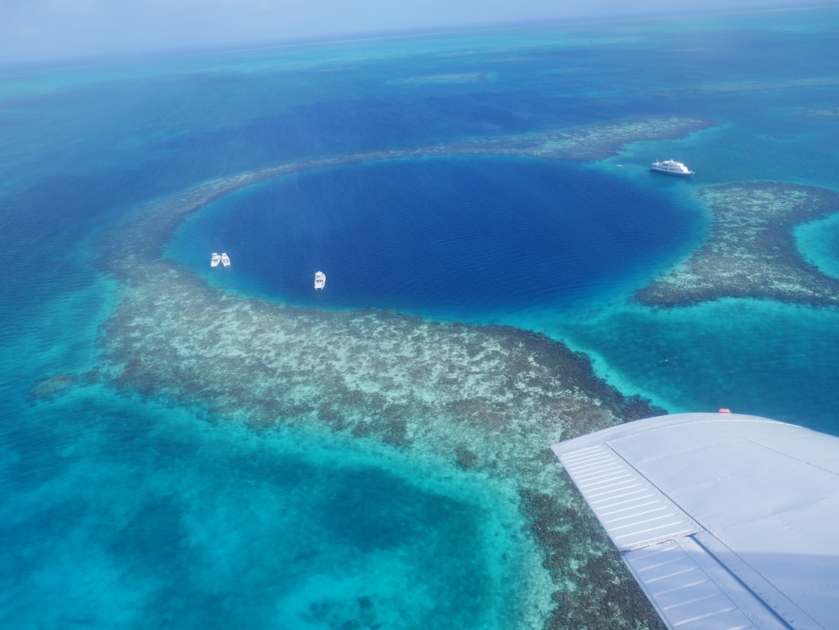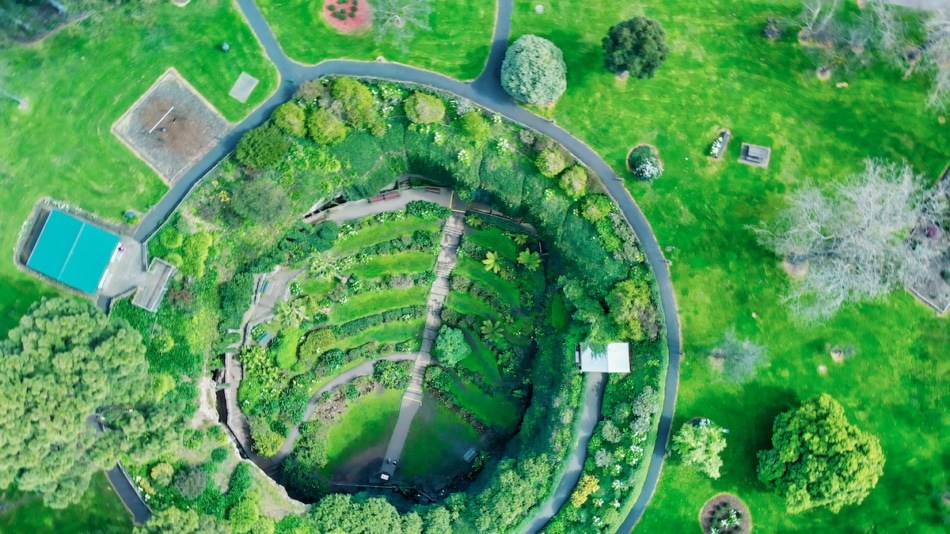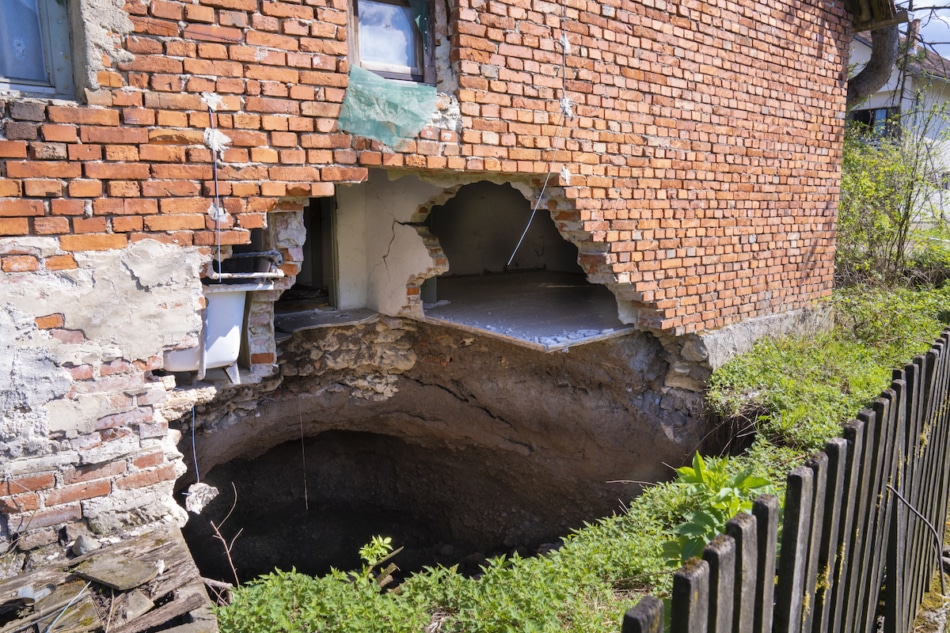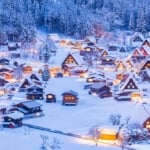Sinkholes and Blue Holes: What Are They?
Sinkholes are the stuff of nightmares. They're known to swallow cars and homes with little or no warning. Why do these end-of-the-world holes form, and how do they differ from Blue Holes? We explain.

Sinkholes have made headlines multiple times over the past year, but hearing about these holes in the earth never gets any less shocking. Or puzzling. They’re the stuff of nightmares and have been known to swallow cars, homes, and the people in them—with little or no warning. Why do these end-of-the-world crevices appear in our backyards and city streets, and how do they form?
What Are Sinkholes and How Do They Form?

Sinkholes begin forming when the layer of soil, rocks, and minerals underneath the ground’s surface (known as “bedrock”) becomes unstable. This can happen for a number of natural and man-made reasons, but the most common is extreme weather, namely heavy rainfall and droughts.
When rainwater seeps into the ground, the acids in it gradually eat away at the bedrock. As the rocks and minerals wear away, cracks and cavities occur within the bedrock structure. Eventually, these cavities expand so much that the ground where we walk doesn’t have enough support beneath it to hold it up, so it collapses suddenly under its own weight. The result is an indentation, or worse, an open hole, which can range in size from 2 to 2,000 feet wide and deep!
Similarly, floods and water main breaks can also lead to sinkholes, since the sheer volume of water from these events can wash out the underground structure of land.
Droughts can also lead to sinkhole trouble. In times of drought, underground aquifers are emptied as people pull water from these reserves in able to irrigate crops and supply our daily water needs. As the reservoirs are sucked dry, air-filled pockets are left behind. And as the soil around the emptied wellsprings dries, it crumbles and drops, deflating the ground as if it were a leaky air mattress.
Top Sinkhole States

You shouldn’t necessarily worry about sinkholes the next time a wet or dry spell settles in. Only certain kinds of bedrock, like limestone and sandstone, which are “soluble,” or easily dissolved, tend to produce sinkholes.
The good news is that only 20% of U.S. land sits atop such rock, according to the United States Geological Survey. The not-so-good news? Much of this sinkhole-prone land runs across Texas, Alabama, Missouri, Tennessee, Kentucky, and Pennsylvania state lines. And then there’s Florida, whose largely limestone bedrock earns it the nickname of “sinkhole alley.”
Blue Holes
Sinkholes aren’t limited to land. They can form underwater too. When they do, they’re called “blue holes”—named for the deep blue color of the water that fills them. (Water, which naturally has a slight blue color, appears a darker shade of blue because it extends so deep down.) They can form in any bank or island made up of a carbonate bedrock (limestone or coral reef). The deepest blue hole in the world is 987 feet deep in the South China Sea, named the Dragon Hole.
Ever visited or looked at pictures of Morning Glory Pool in Yellowstone National Park? It’s a blue hole, as is the Great Blue Hole in Belize, which has been in the news, and is 407 feet deep.
On Shaky Ground
As fascinating as blue holes and sinkholes are, they’re also extremely dangerous. Just like in your favorite disaster movie, sinkholes in real life devour the land and whatever occupies it—homes, businesses, cars, and people included.
To keep yourself and your property safe, be on the lookout for things like structural cracks in walls and floors, sagging trees and fences that once stood level, and circular cracks in the ground. All of these could be a sign that the ground underfoot may be a sinkhole waiting to happen.

Tiffany Means
Tiffany Means is a freelance writer and a degreed meteorologist. She specializes in weather forecasting and enjoys making the subject of weather (and the science behind it) more relatable. She currently resides in the Blue Ridge Mountains of North Carolina.





